Discovering the secrets of growing sage in the country
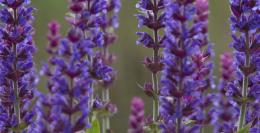
Sage is a perennial medicinal plant from the Lamiaceae family. Currently, decorative forms of this crop with beautiful variegated leaves have been developed. Due to the fairly low winter hardiness and the possibility of freezing in most regions of Russia, it is grown as an annual.
Content:
- Botanical description
- Growing conditions and care
- Growing sage from seeds
- Other ways to propagate sage
- Collection of sage for medicinal raw materials
- Uses of sage
Botanical description
Sage, also known as Salvia officinalis, is a rhizomatous perennial about 30-50 cm high. It grows in the form of densely leafy bushes with pubescent stems. It is characterized by a powerful, highly branched root system and straight branched stems that die off in the winter.
The flowers are deep purple in color, collected in inflorescences in the form of panicles. The flowering period lasts from June to July. Sage fruits are small nuts with a diameter of about 2.5 mm, round in shape and dark in color. They ripen by early autumn. Its germination seeds sage can be preserved for 2-3 years.
Growing conditions and care
Open, well-lit areas with moderately fertile soils of neutral or slightly acidic reaction are best suited for planting sage. This crop feels very good on loamy soils. Salvia can grow in one place for over 5 years.
The main care for this crop consists of timely watering, especially during dry periods, and removing weeds. Sage can withstand drought for quite a long time, but in this case its greenery becomes hard and dry. Also among the care activities it is worth noting feeding. Fertilizers must be applied in two periods.
The first time feeding is carried out in the spring at the time of regrowth of the above-ground part. For this purpose, nitrogen group fertilizers are used. The next application of fertilizers is carried out at the end of August. Various phosphorus-potassium complexes are used for it.
For the second and subsequent years growing Sage, like most other perennial crops, needs pruning. This allows you to renew the above-ground part of the plant. The cutting height should be about 10 cm from the soil surface.
Growing sage from seeds
Sage is fairly easy to grow from seed. It is best to sow them in open ground in early spring or before winter. For this purpose, furrows with a depth of about 1.5 cm are prepared. After sowing, they are covered with a layer of soil of about 1 cm and watered thoroughly.
When sowing, you can also use the seedling method. To do this, in February or early March, seed containers with loose and nutritious fertile soil are prepared. The depth of planting the seeds in them should not exceed 1 cm. If the seeds were fresh and of high quality, then the first shoots can be seen after 2-3 weeks.
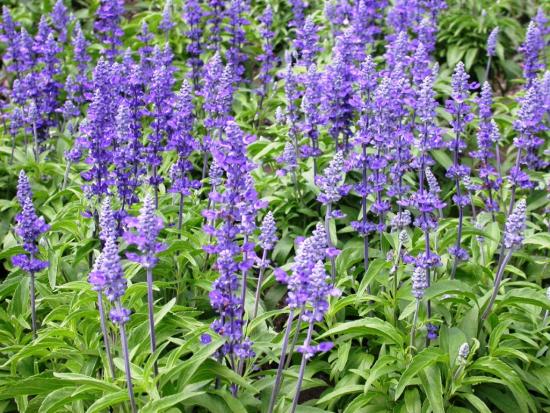
After the first true leaf appears, the seedlings are seated in individual cups. Planting of sage seedlings in open ground begins in the second half of May. The distance between plants should be at least 25 cm.For the first few days it is recommended to shade them with non-woven fabric. covering material.
Other ways to propagate sage
Sage can be propagated not only by sowing seeds, but also by dividing bushes or cuttings. Dividing overgrown sage bushes is best done in the spring when shoots appear. Each division must have a sufficient number of viable buds and a piece of rhizome sufficient for subsequent rooting.
When sage is propagated by division, the first collection of medicinal raw materials can be carried out in the fall, in the year of planting. Cutting sage is a rather labor-intensive process and requires certain skills, so it is used quite rarely.
Collection of sage for medicinal raw materials
Sage leaves and tops of flowering shoots are used as medicinal raw materials. In the year of sowing, the first collection of raw materials is carried out only at the beginning of autumn; growing harvesting is carried out 2 to 3 times per season. Moreover, you can start from the moment of flowering and end at the beginning of autumn. Harvesting is carried out by simply mowing the above-ground part to a height of 10-15 cm.
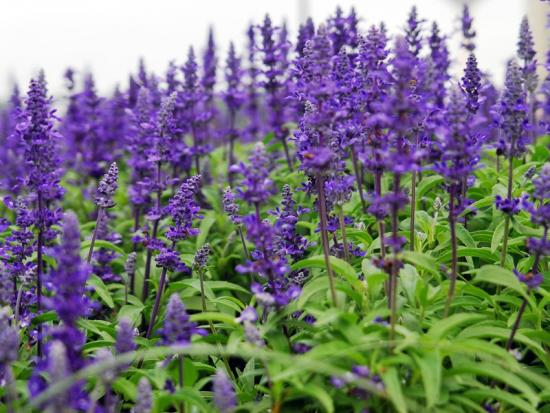
The harvested leaves and parts of the shoots are dried in a dry, well-ventilated place without direct sunlight. After drying, the raw materials are packaged in paper or fabric bags and stored in a cool, dry place.
Uses of sage
Sage leaves and flowers have a pleasant aroma and a specific spicy taste. Therefore, they are very often used as a seasoning in the preparation of a wide variety of dishes. It goes great with meat, fish and vegetable dishes.Very often, the raw materials of sage are used to add to various wines and confectionery products.
This plant is also widely used in perfumery and medicine. In addition, flowering sage bushes are excellent honey plants. Honey collected from the plantation of this plant has a rich golden color and a pleasant smell.
Dried sage herb is a traditional folk medicine for the treatment of various colds. Various decoctions and infusions are prepared from it, which are then used to treat bronchitis, sore throat, and tuberculosis. Besides sage It also has a number of other useful properties:
- Is an excellent tonic
- Relieves bleeding gums
- Has an analgesic and calming effect
Sage essential oil is a valuable component in the production of a number of perfumes and cosmetics. For example, it is often included in toothpastes. Growing beautiful and useful sage in your garden is quite simple. The main thing is to choose a suitable place for the plant and carry out all care activities in a timely manner.
Video about sage and proper cultivation:

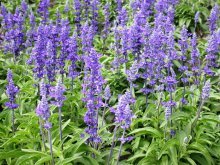
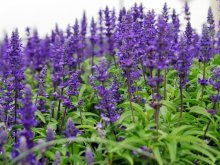
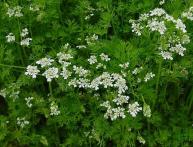
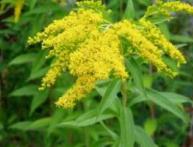
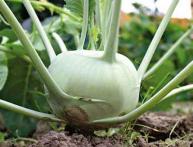
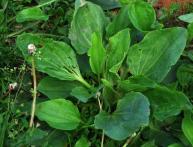
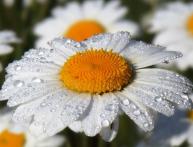
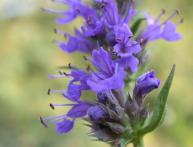
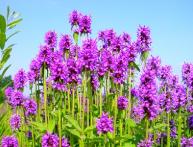
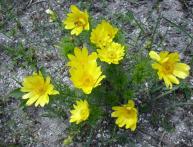
Comments
For a long time I used pharmacy dried herbs for various purposes; sage simply has a lot of options for use, but I’m not very sure about the quality of the product being sold. In this regard, the question is, is there a chance to grow a good harvest of sage on a windowsill?
I once ordered sage seeds via the Internet, unfortunately, nothing grew from them, although I followed the instructions. Therefore, pharmacy preparations of this plant continue to be used.